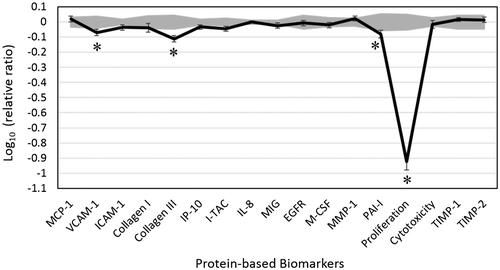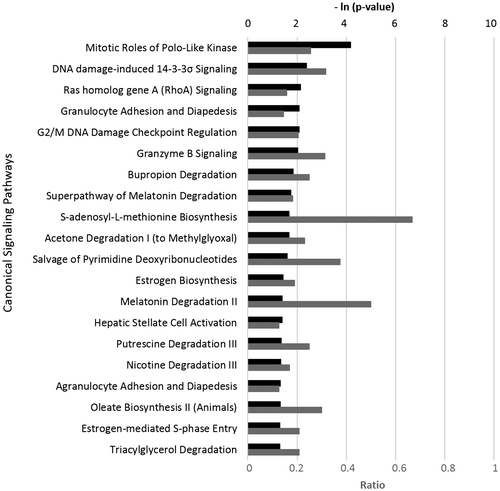Figures & data
Figure 1. Bioactivity profile of Douglas fir essential oil (DEO, 0.0037% v/v) in human dermal fibroblast system HDF3CGF.

Figure 2. Top 20 canonical pathways that match with the profile of biological effects of Douglas fir essential oil (DEO, 0.0037%, v/v) on gene expression in the HDF3CGF system.

